The Sanderburg Street big five
You dont necessarily have to go into the bush for a bit of murder and mayhem
| We have a lot of little gekkos around the place, the friendly kind with a smiley face and little round suckers for toes. (Gekkos make solid urine; not many people know that). This one is disappearing into a snake on our back doorstep. | 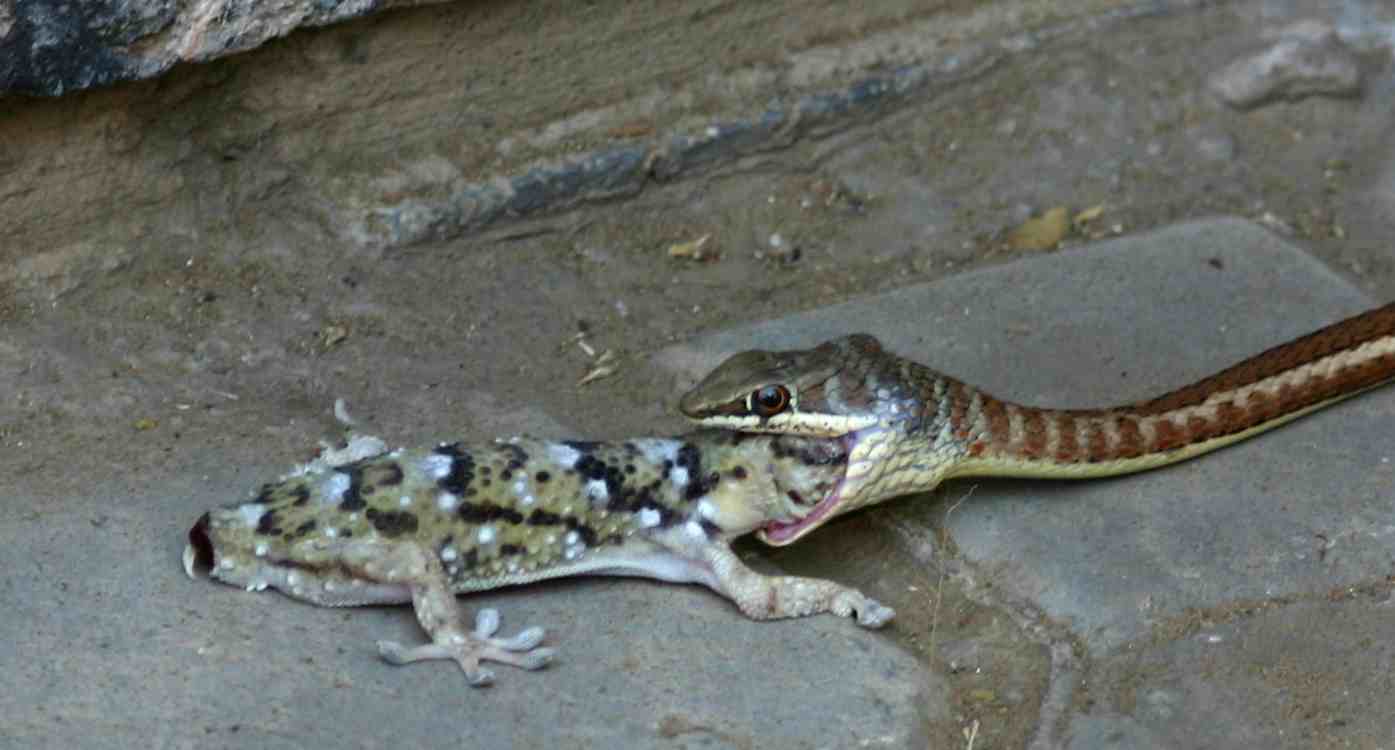 |
The snakes attract the mongooses. This one is a yellow mongoose and he comes into the kitchen after eggs and cheese. He will only eat a very expensive kind of mature South African cheddar. He dominates the cat, a black one that recently taken us into her employ, by making an astonishingly loud sudden noise that is the same electrical crack sound that you get when you short 250000 volts. But he does it without the aid of even a battery. The cat knows how to behave. They say that mongooses that come into upstairs kitchens may be rabid; I wonder whether partiality to mature cheddar is an indication of rabies.
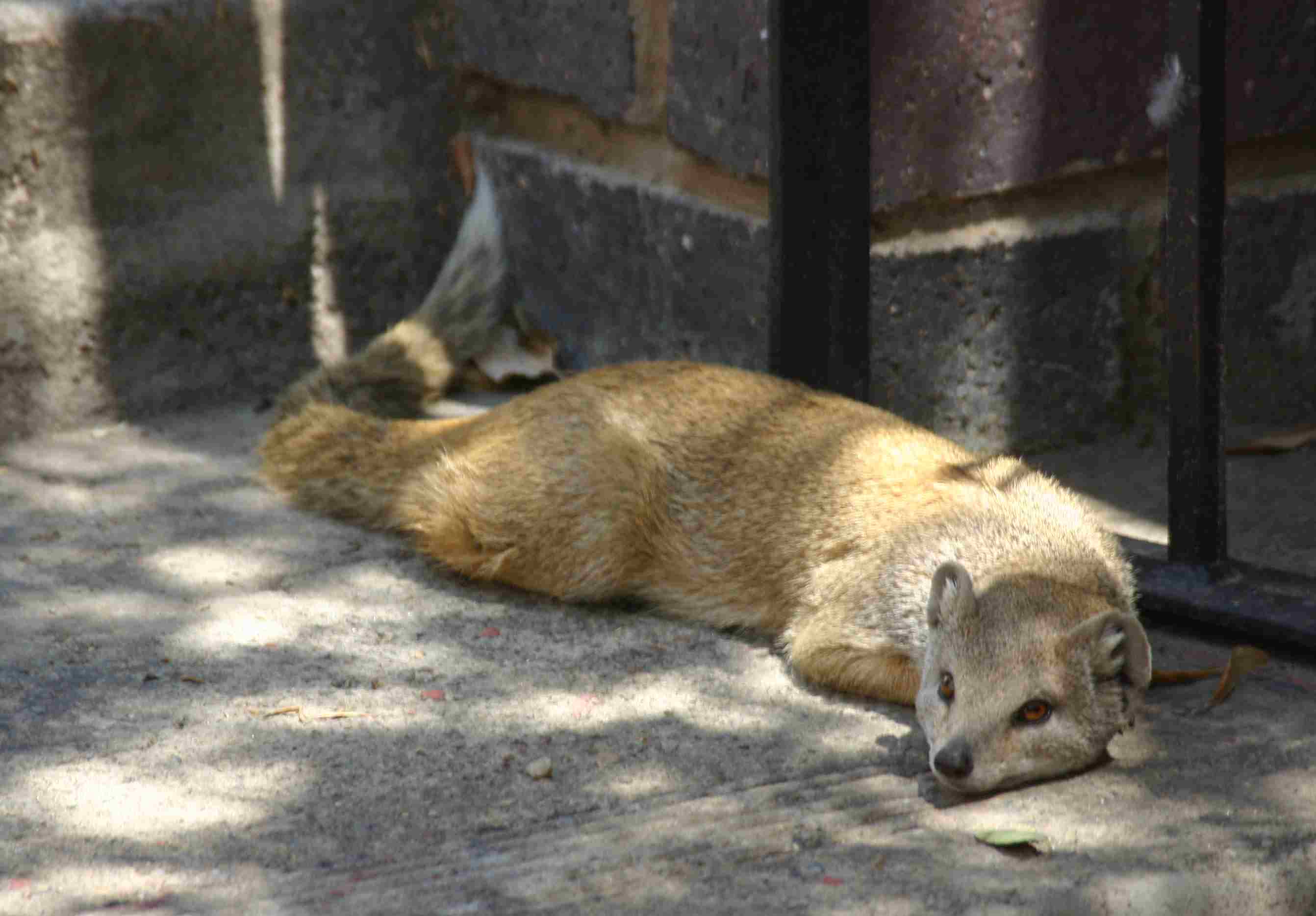
 |
We have a number of incomplete spiders. This is a hunting spider. It is two dimensional and hides under the furniture and rushes out and grabs anthing landing in range. |
We also have an incomplete chameleon. He had his eyed pecked out by one of the masked weavers (below) a pretty routine operation on any reptile that climbs their monkeythorn |
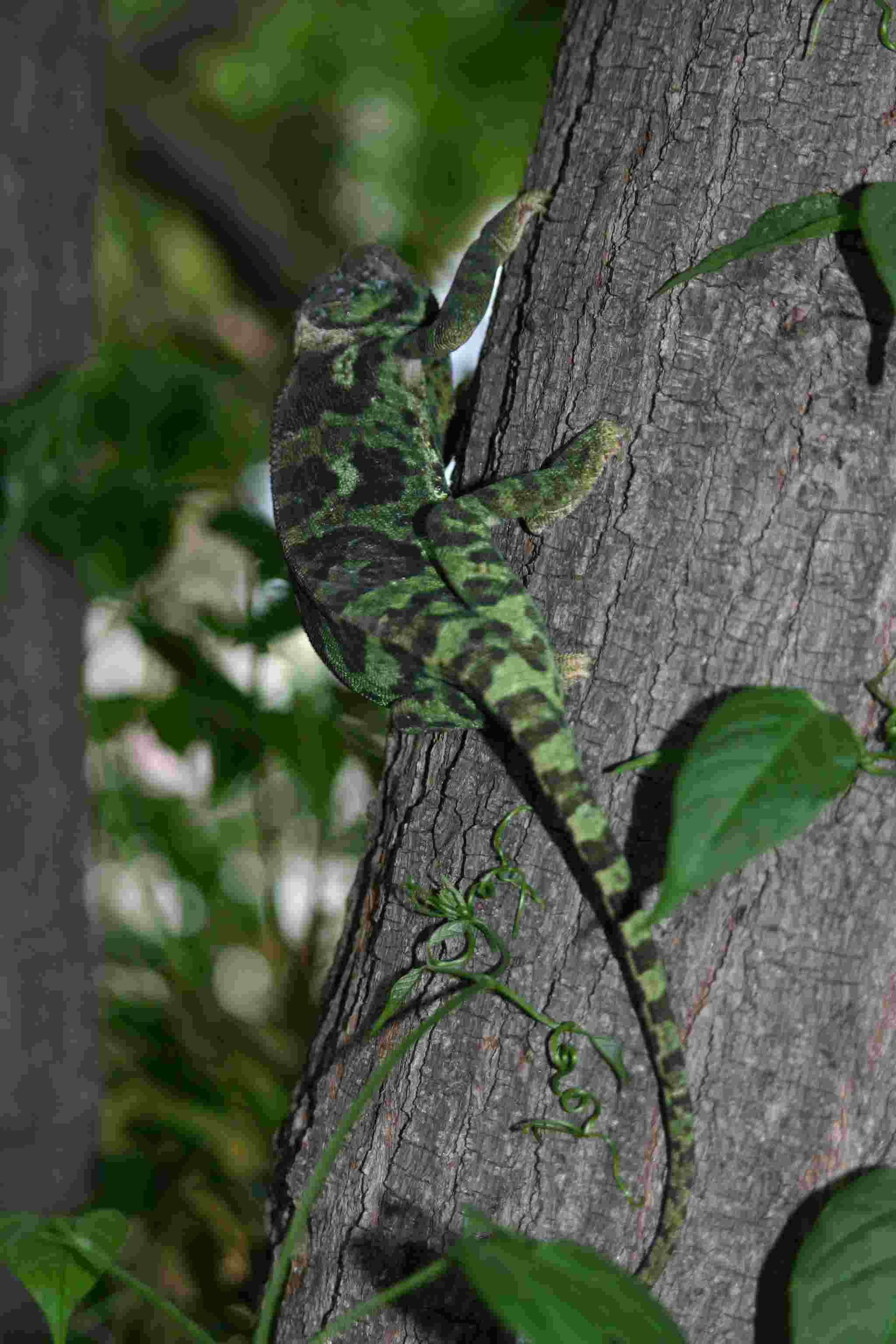 |
 |
Some spiders end up as larders for baby wasps. We have many of these black wasps around. they are 2-3 cm long. This one is feeling the call of spring and she has found one of our larger spiders with an abdomen the size and shape of a good-sized garlic clove. She has been paralysed by the wasp (except for the feet which still wriggle) and the wasp here is pulling her up a 3m vertical wall to her hole where she will lay her eggs in the spiders abdomen. The little wasptjies will then gradually eat her alive from within. Eventually, fully consumed, she will die. |


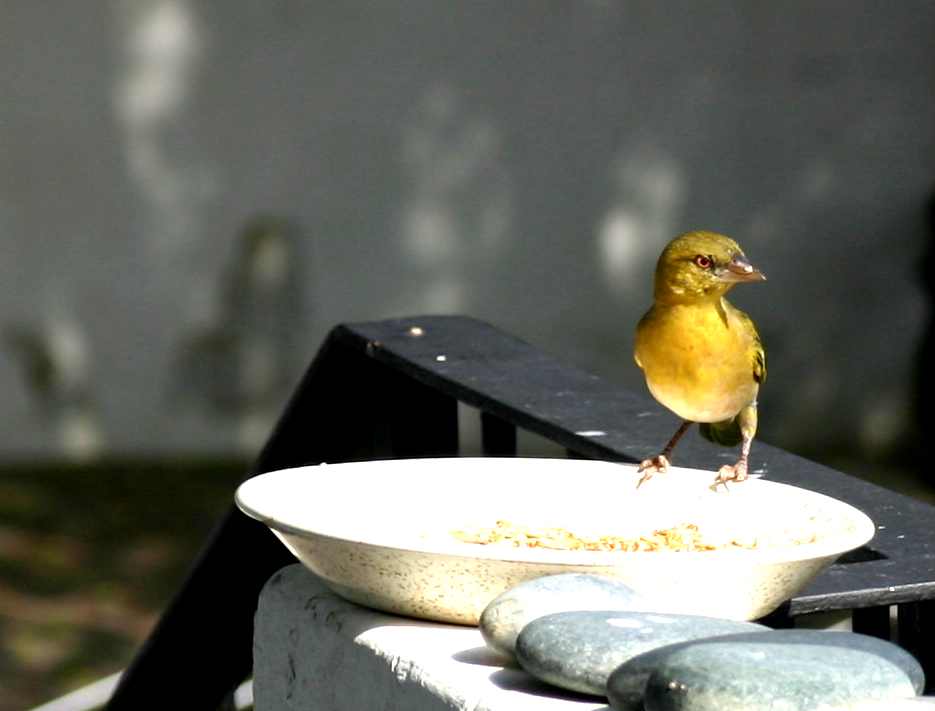 Female
Female
Infanticide is common feature of Sanderburg life. Several masked weavers share the monkeythorn. The males build their nests in suburbs in the tree, about four each. They then market them to discerning females who, when a sale is agreed, pay for them with their body, an interesting dimension to estate agency that I’m quite surprised has not caught on more widely here. The transaction only seems to take a few seconds or so and close observation reveals that there are considerably more transactions than nests.
This means that there is no guarantee that any of the female occupants is incubating the builder’s genes and suspicion mounts. So much so that when the nests are full of chicks the male indulges in a frenzy of unweaving. My first task on many a morning is to help any remaining whimpering chicks on to their next existence.
Perhaps the most interesting thing about the Namibian spring is that it doesn't happen. You only get a spring when it rains in winter but here in Namibia throughout the winter there is not a cloud in the sky. Spring technically begins at the equinox, 21st September, but it does not start raining seriously until the Kaiser's birthday on the 27th January. So we have two springs in Sanderburg street. The exotic hosepipe plants spring to life when the day gets longer. The Namibian ones wait on the Kaiser (still).
But then they do a lot of catching up
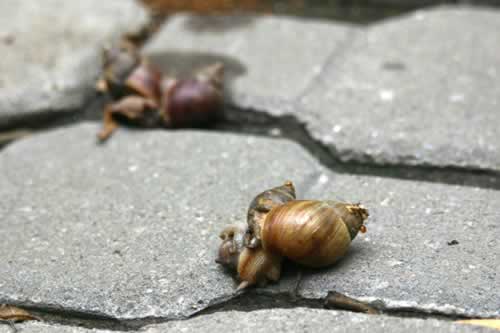 |
We've just passed the Kaiser's birthday and we've had a bit of rain (20cm or so in the last week) and, as usual in these circumstances, we have had an outbreak of mass copulation. Everything, plants and animals, are at it and Namibia disappears under a pheromonal haze. Everything has to be conceived, born and grown before things dry out again. We take care where we tread. |
I'm sure that somewhere there must be a good recipe for these things; braised, they cold be nice and crunchy. And they are a very common and unexploited source of protein here in the autumn. They eat vegetation and each other. Indeed so strong is their attraction to their squashed friends on the road that at this time of the year a layer of flattened Acanthoproctus cervinus forms on most roads and driving becomes a continuous popping experience. Commonly they are called the armoured corncricket and they over-winter as eggs maturing in the autumn. They are about 4cm long (body only) and squeak in the grass as you pass. |
 |